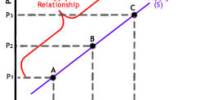Urban economics is a branch of economics that studies the economics of cities. It covers a wide range of topics, including housing, transportation, land use, the cost and benefit of cities and urbanization, and the provision of local public goods such as education. It is broadly defined as the economic study of urban areas, and as such, it entails using economic tools to analyze urban issues such as crime, education, public transportation, housing, and local government finance. It is a subfield of microeconomics that studies the spatial structure of cities as well as the location of households and businesses.
To understand why cities exist, we must first imagine a world without them. There must be equal productivity, constant returns to scale in production, and constant returns to scale in exchange for there to be a place without cities. Because there is no specialization in any one area and thus no need for a city to develop, equal productivity allows each person to be responsible for himself or herself.
The next requirement for there to be no cities is constant returns to scale in production. As a result, if production is subject to economies of scale, households are more likely to involve a trading firm when trading their products. This is because trading firms will be able to trade effectively with lower transaction costs than if the household did it themselves.
The study of urban economics focuses on the economic relationships and processes that contribute to the important spatial characteristics of urban and regional economies, particularly their size, density of settlement, and land use structure and pattern. Much urban economic analysis is based on a specific model of urban spatial structure, the monocentric city model developed in the 1960s by William Alonso, Richard Muth, and Edwin Mills.
Alonso’s monocentric city model of a disc-shaped Central Business District (CBD) and the surrounding residential region has served as a starting point for urban economic analysis since its inception in 1964. Monocentricity has weakened over time as a result of technological advances, particularly faster and cheaper transportation (which allows commuters to live further from their jobs in the CBD) and communications (which allow back-office operations to move out of the CBD).
Recent research has also attempted to explain the polycentricity described in Joel Garreau’s Edge City. Several explanations for polycentric expansion have been proposed and summarized in models that take into account factors such as utility gains from lower average land rents and increasing (or constant) returns due to agglomeration economies.
As a result, urban growth is used as an indicator of a country’s or region’s economic condition and development. Certain factors, such as surplus resources, infrastructure development, commercialization, education, and mining, among others, frequently influence the growth of urban areas.
As a result, cities exist because it is advantageous to produce what you are good at and use trading firms to reduce costs and trade with other cities that may specialize in something else. Larger cities will develop with a central business district as a result of this trading effect and the fact that firms cluster.
















